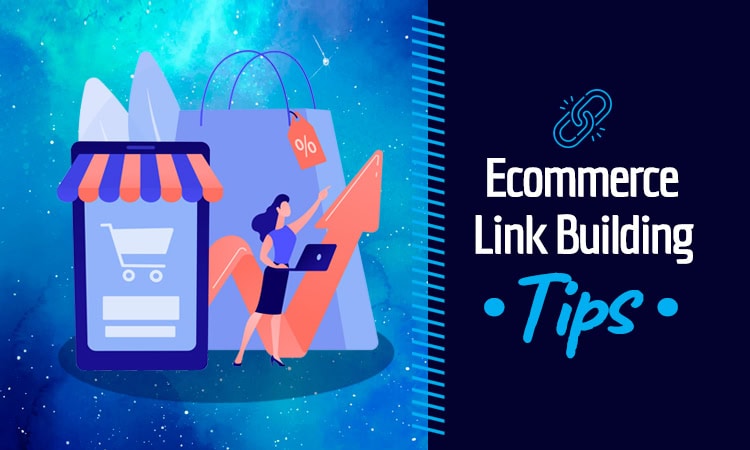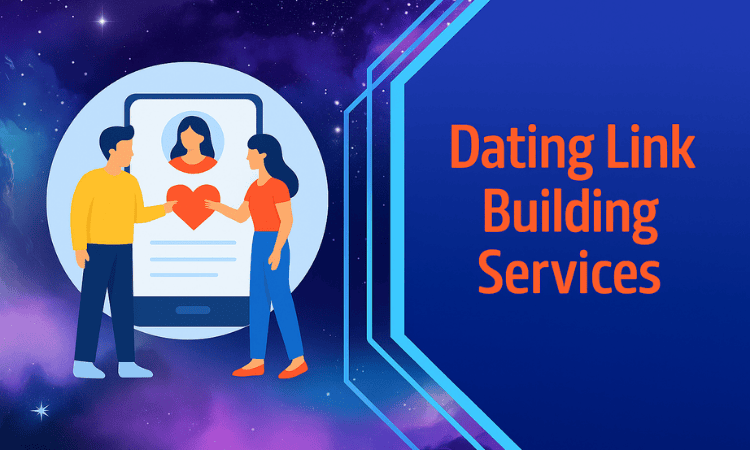The e-commerce industry is highly competitive, which is why search engine optimization (SEO) is so important. SEO marketing efforts use high-quality content to attract your target audience, distinguish you from others in your niche, and improve your online visibility.
A strong e-commerce link-building strategy is crucial for SEO because it raises your domain authority. With quality external links pointing back to your site, you can improve your search engine rankings and strengthen your reputation. In this article, we’ll outline the most valuable e-commerce link-building tactics that you can get started with today.
Why Link-Building is Different for E-Commerce
E-commerce link-building efforts are slightly different than traditional link-building. An e-commerce website typically has a large volume of product pages, which may have significant overlap. Each page needs to have inbound links, but since many of the pages will have similar content, it can be a challenge not to duplicate material from one link to another.
Additionally, your e-commerce business must have scalable strategies that will grow with your product offerings. At Stellar SEO, we can develop a custom link-building strategy that adapts to your company’s growth to ensure that you can expand your scope.
-
Importance of High-Quality Backlinks for E-Commerce
With thousands of e-commerce stores in every niche, consumers are overwhelmed with options and will choose the first site that appears to meet their needs. While keywords and site structure matter, a great link-building strategy also enhances lead generation by improving authority.
Domain authority is an informal metric that helps determine whether you’ll appear at the top of search engine results pages. Higher authority boosts your e-commerce site’s visibility, which means you’re more likely to be chosen over competitor links.
Additionally, solid e-commerce link-building strategies build trust with your audience. When consumers find you on other sites that they trust, they are more likely to trust you, too. High-quality links drive more traffic to your site while encouraging consumers to buy from you.
15 Actionable Ecommerce Link-Building Tips
Content-Driven Strategies
-
Create Comprehensive Buying Guides
When you create content about your products, you naturally attract links from blogs and influencers. Those interested in your products will want to share the good news with their audience, which leads to more links and referral traffic.
E-commerce website owners can develop keyword-rich buying guides that discuss your product’s advantages to take advantage of organic link building. The goal is to specifically explain what needs your products fulfill and how users can benefit.
Some important points to bring up in buying guides include the ideal user, how your product is superior to other options on the market, and key features that users can benefit from. Go into detail about how the product works and what outcomes users can expect.
For example, if you sell industrial-strength disinfectants, explain that these are meant for contractors like water damage restoration companies. Discuss selling points like eco-friendliness, ease of use, or how thoroughly they get rid of mold and bacteria based on market research. You’ll also want to compare it to other disinfectants on the market and explain why yours is the superior product.
While writing these guides, it’s important not to engage in keyword stuffing, which is when you add too many keywords to the content in hopes of gaming search engine algorithms. Instead, you should naturally incorporate high-value keywords into headers and throughout the copy where they make sense.
-
Publish Data-Driven Industry Reports
Industry reports are also an excellent way to acquire natural links. Journalists and researchers always need to find relevant resource pages for their articles, especially those with statistics or case studies.
By gathering and publishing unique data, your e-commerce business can acquire quality links from trustworthy websites like news outlets and business magazines, all without performing active link outreach.
This can also be a valuable method for broken link building. Also called lost link building, you will review different websites to find broken links, then reach out and recommend that they replace this link with a live backlink to your resource.
Given that broken links also drop the referring partner’s rankings, they will usually be more than happy to replace this lost link with one to your high-quality resource. This way, you both extend your reach and develop a working relationship with another website.
-
Develop Product-Specific Tutorials
Another powerful form of content marketing is product-specific tutorials, which reviewers and educational sites can use when composing articles about your industry. This kind of link-worthy content is very valuable to reviewers, as they can then compare your product’s use cases with others in a similar category.
Multimedia will work best for these product tutorials. You may shoot a short video showing the product in action or highlighting its different uses, then explain it step-by-step through text.
Infographics explaining the process are also highly shareable, which is perfect for attracting more attention to your site. However, make sure to watermark the infographic with your website URL in case it is shared elsewhere; otherwise, users won’t know where to find more information.
-
Write Seasonal or Holiday Content
Your blog posts can easily attract relevant backlinks when you focus on seasonal, topical content. For example, if your online business sells clothing, you can discuss the best clothes for different types of summer vacation or winter activities. Influencers and bloggers looking for resources will then include your link in their seasonal posts.
If you have already been following this method, ensure that you update previous seasonal posts with new content or links. Algorithms prioritize freshness, so updating older material will help it start ranking and acquiring backlinks again.
Influencer and Partnership Outreach
-
Collaborate with Influencers in Your Niche
Every niche has influencers, whether that’s cooking or crafts. Working alongside these influencers can significantly improve your brand visibility and attract numerous social media links, which will boost organic traffic and, therefore, improve search engine rankings.
When looking for influencers to partner with, don’t discount those with smaller followings. A long-term relationship can keep them from attracting working competitor links later on in their career, and you’ll benefit from their growing success.
-
Offer Guest Posts to Industry Blogs
Guest posts are a powerful way to get more attention to your e-commerce site while providing valuable information to a relevant audience. With this strategy, you’ll pitch a guest post to website owners, including which page you’ll be linking to and what anchor text you will use. The goal is not to advertise your services but to explore a specific topic and reference your business as a resource.
When suggesting a guest post to a site owner, the most important thing is to explain how your website is relevant to their ideal audience. You’ll also need to ensure you include relevant links to other pages on the site and to other websites that have valuable content.
-
Sponsor Local or Niche Events
Local sponsorships and niche events can be excellent ways to increase publicity for your e-commerce site while developing brand loyalty. Engaging with your community builds goodwill and naturally attracts links through higher visibility.
This link-building strategy involves hosting branded events or offering to sponsor a local event in return for branding opportunities. The types of events you can sponsor will vary significantly depending on your niche, but they should be connected to your product offerings.
For example, a promotional products supplier could sponsor a Chamber of Commerce event in their area. The attendees would naturally be interested in your products as they promote their companies, and they may decide to check out your product lines when they plan their next events.
You can then acquire backlinks from the Chamber of Commerce and any local news sources covering the event. This will spread the word about your services to other companies that may also require promo products for their events, thus attracting referral traffic and improving your rankings.
-
Provide Exclusive Deals to Bloggers
Offering discounts and deals to bloggers can also be a great way to generate links. For example, you could send a blogger free products in exchange for a review or offer them a coupon code if they mention your brand in a post.
Community Engagement Tactics
-
Engage Actively on Niche Forums
Forums and discussion boards can be a great way to engage with your audience and get sites linking to you, especially if the primary audience is already interested in your services. If the linked site has a highly involved community, you can attract more traffic to your site and generate more sales.
For example, you might find a discussion board where a user asks a question you’ve answered in a previous blog post. You can provide a brief explanation, then link back to your post and encourage the user to look there for further information. This gains you a backlink, positions you as an authority, and builds trust with your community.
-
Utilize Social Media for Backlink Opportunities
With people spending more time online than ever before, social media is an invaluable element of e-commerce link-building strategies. Building relationships on platforms like Twitter, LinkedIn, Bluesky, and others can help you find other website owners willing to exchange quality links with you.
By sharing link-worthy content, you can attract organic backlinks from users who share your link on other websites or repost your link. While search engines don’t use social media followers and engagement as part of their rankings, you’ll still gain benefits when other websites link to your posts.
Resource-Based Strategies
-
Get Listed in Gift Guides or Resource Lists
Your e-commerce link-building strategy needs to focus on those who are already interested in your product, which means finding your way onto lists of product recommendations or resources. Things like gift guides, gear roundups, or lists of small businesses to support can all be invaluable ways to boost your link-building efforts.
When asking for inclusion on these lists, you need to find website owners in your niche who are planning on a product guide. Look through this site’s backlog to see if they post quality content similar to what you’re looking for, whether that’s a year-end roundup of offerings in your niche or business directories.
Then, reach out and describe your product in detail, asking if they would have an opportunity to feature you in the future. Explain how your products are relevant to their target audience and how they address users’ pain points, whether that’s being a budget option or having unique additional features.
You can also suggest you be placed on a list of e-commerce businesses or resources for shoppers. Many websites share lists of small businesses for shoppers to support based on categories like eco-friendliness or owner characteristics. Share a bit about your backstory and explain why you match the profile they’re looking for.
-
Submit Your Store to Niche Directories
Online business directories can be a great resource for link-building because they are frequented by people looking for similar products to yours. These are typically arranged by specialty, such as boutique gaming equipment, and cater to individuals who don’t want to spend hours looking for certain products.
These directories will have highly relevant traffic and can offer high-authority backlinks that can lead to sales. They may be hosted on news outlets, personal websites, trade journals, hobby blogs, or industry magazines, all of which can provide both backlinks and referral traffic.
-
Build a Resource Hub on Your Website
Content marketing is one of the ways to improve your backlink profile for e-commerce link-building. When you have shareable content on your website, you’ll naturally attract backlinks from those interested in your products or who need references for their website.
Good content for building e-commerce links can include interactive tools, guides, and FAQs about your products. For example, if you’re an apparel store, you could create a sizing guide to help consumers determine the right size for their needs. Those who sell building products can create estimators so that shoppers can decide how much to buy based on square footage or other measurements.
By providing value to potential shoppers, you’ll gather backlinks from those sharing the resource with their audience or peers. This way, you can benefit from link-building without directly contacting other websites.
Innovative Link-Building Techniques
-
Leverage User-Generated Content (UGC)
If you have already developed some brand visibility, you can receive high-quality backlinks from your customers by encouraging them to create user-generated content. This is also a great way to improve online visibility on social media.
To gather user-generated content, prompt users, such as asking them to take a selfie with the product and share it using a link back to the product page. You could also create a unique hashtag for users to include in posts, which you’ll then monitor and collect content from.
-
Run Contests or Giveaways
Everyone loves contests and giveaways, but they are also a great way to attract high-quality backlinks. Contests can be combined with user-generated content, which will be used as entries and for advertising purposes. For example, you could ask users to write an article discussing a unique use for your products. These articles could then be hosted on your site, and the winner would receive a free product.
You can encourage users to share your page for additional entries. However, it’s important that you have an actual judging system in place if you run a contest to ensure that it’s fair. Otherwise, your business may gain a reputation for running deceptive contests.
Giveaways are also a great option. For example, you may offer a curated package of products based on a certain theme with a landing page for the contest. You can then allow participants to enter by sharing a link to the page, which will naturally attract more entries.
Measuring the Success of Your Link-Building Campaign
Like all SEO elements, you need to track the progress of your e-commerce link-building strategy to identify potential improvements. Metrics like authority, referral traffic, and organic rankings are useful ways to determine whether you’re succeeding and what needs to change.
You can track the traffic from each link to see if there are any common trends. As an example, you may find that you get the most traffic from niche directories or product recommendation guides, while less traffic comes from social media.
While you shouldn’t stop building links on places like Twitter or LinkedIn, these results tell you that industry-specific resources provide more quality links that help you reach your business goals.
Common E-Commerce Link-Building Mistakes to Avoid
-
Focusing on Quantity Over Quality
Every link back to your e-commerce site serves as a recommendation for your services and will influence your reputation. If your e-commerce website has dozens of links from shady sources, your authority and rankings will drop because these make search engines believe that you’re untrustworthy.
On the other hand, a few quality links can significantly improve your reputation and lead to higher traffic over time. As such, you should focus your link-building efforts on the most valuable resources rather than seeking out dozens of low-quality backlinks.
-
Neglecting Anchor Text Optimization
Ideally, you want your e-commerce website to rank well for a variety of relevant keywords rather than just one or two. As such, you need to use different anchor texts throughout your online presence instead of using the same terms every time.
This is where SEO tools come in handy. Resources like Google Keyword Planner can help you find variations on high-value terms that you can use in your link-building efforts so that you have a highly diversified anchor text system.
Even a word or two in the anchor text can make a big difference to search engines, so be sure that you think carefully about which keywords you want to rank for and have a large list of anchor text options for your referring partners.
-
Ignoring Nofollow Links
“dofollow” links are the golden key for e-commerce link-building because they directly impact your authority. These links pass on PageRank value and, therefore, will improve your rankings. Essentially, this means that the referring partner has agreed to let your reputation influence theirs because they trust you.
While a “dofollow” link will enhance your website’s authority, nofollow links can still help your e-commerce site by improving referral traffic. While they do not influence your PageRank and won’t improve your rankings, they provide more brand exposure.
As such, don’t ignore the value of nofollow links. You should still seek these opportunities out, recognizing that they will enhance your overall visibility even if they don’t directly contribute to your website’s authority.
Conclusion: Building Links to Scale Your E-Commerce Store
Building links is a long-term effort that requires consistency and patience. Focus on providing value to your audience through a strategic link-building strategy, where you seek to reach them on other sites they frequent.
Most importantly, focus on quality over quantity. Find great link partners and develop long-term working relationships with these resources so that you’ll benefit in the future, even if the backlink partner does not have a large platform as of yet. By supporting good referring domains, both you and the link partner can enhance your authority over time.
If building links is challenging due to limited resources or time, Stellar SEO is here to help. We’ll develop a customized link-building strategy based on your specific business goals, niche, and market competition, finding you the best links to improve organic traffic.
Our team will develop valuable content that helps you rank higher on search engine results and attract more natural links. With our help, you can get more attention online and grow your e-commerce business. Contact us today to see how we help e-commerce companies thrive in this highly competitive niche.
















